- Yokohama-shi Top Page
- Living and Procedures
- Community Development and Environment
- Roads
- Construction
- Bridges
- Replacement of bridges
- Replacement of old bridges
Here's the text.
Replacement of old bridges
Last Updated March 13, 2019
Bridges replaced in the past
Idogaya Bridge (Minami Ward)
Completed in August 2013
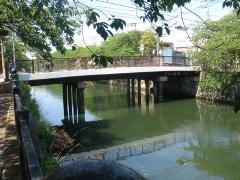 Old Bridge
Old Bridge
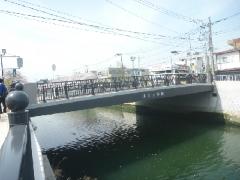 Shimbashi
Shimbashi
Idogaya Bridge is a bridge completed in 1929 as an earthquake reconstruction bridge. More than 80 years have passed since the construction, and due to the remarkable deterioration, we started a replacement project, and widened the pedestrian path in Hashigami.
Egasaki Overpass (Tsurumi Ward)
Completed in March 2013
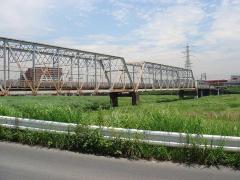 Old Bridge
Old Bridge
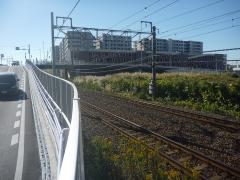 Shimbashi
Shimbashi
The Egasaki Overpass is a truss bridge built by the Japan National Railways by converting a railway bridge in 1929 to eliminate regional divisions associated with the construction of the Shin-Tsurumi Dockyard.
Approximately 80 years have passed since the re-construction, and more than 110 years including the service as a railway bridge (Platt truss part), so the aging has progressed, and the width of the bridge was as narrow as 5.5m, which was dangerous. Therefore, by rebuilding, widening the roadway, and installing sidewalks on both sides, we improved local traffic convenience and pedestrian safety.
Kasumi Bridge (Naka Ward)
Completed in March 2013
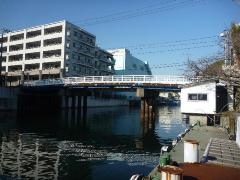 Old Bridge
Old Bridge
Shimbashi
As a result of a detailed survey of steel piers in Kasumi Bridge, significant corrosion was confirmed over a wide area, and the bridge was replaced. In rebuilding, the Pratt Truss of the Egasaki Overpass, which has a high historical value as a civil engineering heritage, was relocated and reused.
Shinkai Bridge (Naka Ward)
Completed in September 2012
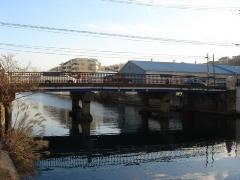 Old Bridge
Old Bridge
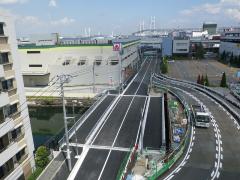 Shimbashi
Shimbashi
The Shinkai Bridge, which spans the Shinyamashita Canal, is a bridge completed in 1933. Approximately 80 years have passed since the construction, and the aging is progressing, seismic reinforcement has become an issue, and replacement has been carried out to widen the sidewalk. .
Miyakobashi Bridge (Midori Ward)
Completed in March 2012
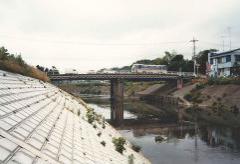 Old Bridge
Old Bridge
Shimbashi
The prefectural road Aoto Kamihoshikawa Line of this bridge is close to Nakayama Station and has many pedestrians and cyclists. However, the section from Miyakobashi Bridge to Aoto Intersection is dangerous because there is no sidewalk, and Miyakobashi Bridge has an effective width of 5.5 meters, making it difficult for large cars and buses to pass each other. For this reason, the replacement was carried out to widen the roadway, continuous and improve the sidewalk.
Tanimoto Humanitarian Bridge (Aoba Ward)
Completed in March 2012
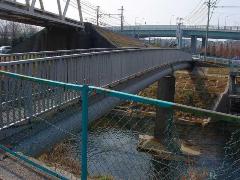 Old Bridge
Old Bridge
Shimbashi
The old bridge was completed in 1966, and the upper part of the water pipe bridge was used as a humanitarian bridge, but since the width is as narrow as 1m and only alternate traffic can be performed, and the earthquake resistance of the bridge is not secured, Shimbashi has a width of 4m, making it a bridge that meets the current road standards, improving the convenience of users and improving the safety of earthquakes.
Mi (Naka Ward)
Completed in February 2011
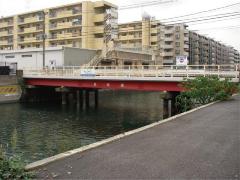 Old Bridge
Old Bridge
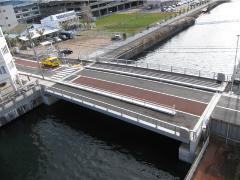 Shimbashi
Shimbashi
Damage was found in the underwater part of the steel pier of the Miharu Bridge, so the vehicle was closed with emphasis on safety, and a further detailed survey was conducted. As a result, damage that impairs the structural stability of the bridge was found, and there were many damaged parts, so the bridge was replaced instead of repairing it.
Sakaigawa Bridge (Izumi Ward)
Completed in March 2011
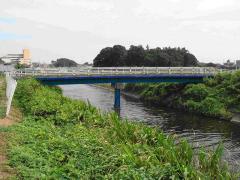 Old Bridge
Old Bridge
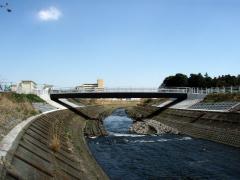 Shimbashi
Shimbashi
The Sakaigawa Bridge, which spans the Sakaigawa River, is a 30m long road bridge managed by Yokohama City, constructed in 1967. In this project, Yokohama City rebuilt the Sakaigawa Bridge, where piers and abutments interfere with the planned river cross section due to the river improvement project, as a joint project with Kanagawa Prefecture, the river manager, and carried out revetment work around it. Thing.
Hanami Bridge (Minami Ward)
Completed in October 2011
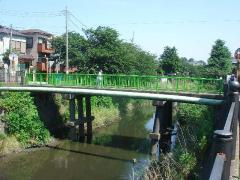 Old Bridge
Old Bridge
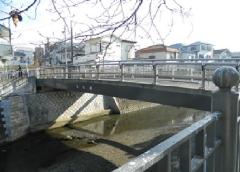 Shimbashi
Shimbashi
Hanami Bridge is a bridge in Minami-ku, Yokohama, which spans the second-class river Ooka River. Fifty years have passed since the construction in 1959, and in addition to the bridge girders and railings, the abutments and piers supporting the bridge have also deteriorated significantly. Replacement was carried out, and the new bridge was set up to improve pedestrian safety and improve earthquake resistance.
Nojima Bridge (Kanazawa Ward)
Completed in March 2010
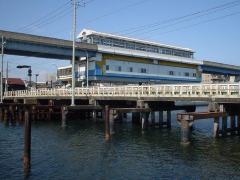 Old Bridge
Old Bridge
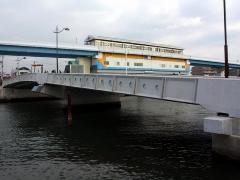 Shimbashi
Shimbashi
The old bridge completed in 1956 over the Nojima Canal was replaced. The new Nojima Bridge has a 6.0m wide two-lane roadway bridge and a 4.0m and 2.0m humanitarian bridge on both sides to ensure user safety and barrier-free. In addition, "metal spraying" is used to prevent corrosion of roadway bridges, and "ultra-high-strength fiber reinforced concrete" is used for the main structure of humanitarian bridges in the city, and as a coastal bridge, salt damage etc. Has dramatically improved durability.
Shio (Tsurumi Ward)
Completed in November 2009
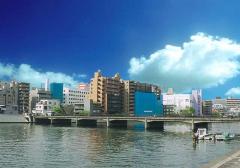 Old Bridge
Old Bridge
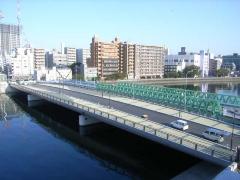 Shimbashi
Shimbashi
Shiomi Bridge is a bridge that spans the first-class river Tsurumi River. The old bridge was completed in 1955 with a bridge length of 123m and a seven-diameter reinforced concrete correction, and has been popular with local people for half a century. Along with the river improvement of the Tsurumi River, Yokohama City has been replaced as a joint project with the Keihin River Office of the Ministry of Land, Infrastructure, Transport and Tourism, the river manager. With the replacement, the new Shiomi Bridge conforms to the current road bridge standards, improving safety against earthquakes, and widening the sidewalk so that pedestrians and bicycles can pass safely.
Negishibashi (Isogo Ward)
Completed in October 2007
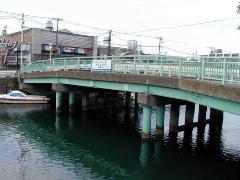 Old Bridge
Old Bridge
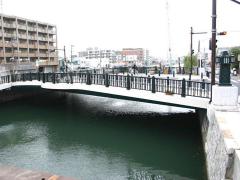 Shimbashi
Shimbashi
The old bridge completed in 1926 as a reconstruction bridge after the Great Kanto Earthquake was replaced.
The new Negishibashi designed the landscape based on the concept of harmony between the appearance of the former Negishibashi, a symbol of reconstruction, and the functional and friendly Hashigami space.
Various efforts have been made, such as restoring the main pillar design at the time of the reconstruction of the earthquake, and placing alcoves on wide sidewalks with the participation of local residents.
Nakamurabashi (Minami Ward)
Completed in June 2007
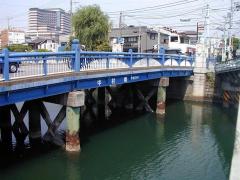 Old Bridge
Old Bridge
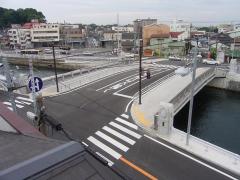 Shimbashi
Shimbashi
The old bridge completed in 1926 as a reconstruction bridge after the Great Kanto Earthquake was replaced.
The new Nakamurabashi has a three-lane road with a width of 9.75m and a semi-flat sidewalk with a width of 4.0m on both sides to ensure user safety and make it barrier-free.
In addition, the main pillar of granite at the time of completion was left on the old bridge, so this pillar was reused in Shimbashi to preserve the remnants of that time.
Sueyoshi Bridge (Naka Ward)
Completed in March 2007
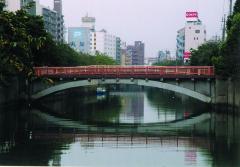 Old Bridge
Old Bridge
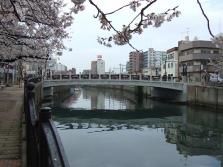 Shimbashi
Shimbashi
The old bridge completed in 1929 as a reconstruction bridge after the Great Kanto Earthquake was replaced.
The new Sueyoshi Bridge has a two-lane road with a width of 7.0 meters and a semi-flat sidewalk with a width of 3.0 meters on both sides to ensure user safety and make it barrier-free.
In addition, the old bridge was an arch bridge, and the silhouette of the curve reflected on the river surface was familiar to local residents, so when replacing it, the design was designed in consideration of the landscape that leaves the impression.
Inquiries to this page
Bridge Division, Road and Highway Bureau Construction Department
Telephone: 045-671-2791
Telephone: 045-671-2791
Fax: 045-662-3945
Email address: do-kyoryo@city.yokohama.lg.jp
Page ID: 545-945-399







